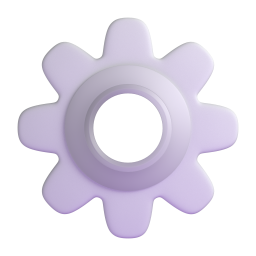You know what everyone - What if I just move my testing into the home office where the computers are? I just thought of that. Then I would not need a separate machine.
WasPentalive
- 20 Posts
- 111 Comments
Or at least be able to ssh into a linux environment.
Oh sorry, 10" 10 inches. Small enough to tote around, big enough to read easily.
Thanks everyone who has suggested this, I had not thought of SSH to my main machine or even my server machine for this. Good idea. I am not sure about a tablet though because I want a keyboard. Since I would be ssh-ing into a linux machine linux on the little machine is not a must anymore.
Those are good points. I am collecting my own data in a home environment. Did I say that it is important to be able to move the data to my production computer to send to the doctor?

 2·3 months ago
2·3 months agoCan you replace the CMOS battery with a supercapacitor that is kept charged? This should not need to be replaced every 4 years, I think.
I took MapMyDrive on a longer drive. It seems to have an issue where the app just shuts off at random times. I don’t think it is a ‘free version’ feature, and I am not sure that it is not my OS shutting it down after it is no longer on screen. Ti will be ok for trips where I am not driver and navigator at the same time (driving alone) as passenger/navigator I can re start it before to much ground is lost.
How does Nextcloud help you see a map? Or, is it only a way to get the data to your computer? If it is only the way to get the track into your computer, what turns it into a map? OpenTracks creates tracks in the phone eh?
Oh Opentracks cost $ in the playstore. oops. It’s not much tho.
Well the map is the whole point. I tried out MapMyDrive today so now the only question is can I screenshot the map it gives and get that to my computer.
I am not sure what that is, but I would like as a final product a map showing the route taken. I can’t wait for the next opportunity to drive a distance to see what “MapMyDrive” provides.
I am currently auditioning “MapMyDrive”
Workstations machines get first name type names that are inspired by the brand of the machine. This asus is named adam.
Just never make it lie…
One place I worked we had a rule - do not name a server for any group using it. It seems the groups become territorial when you try to add a different group to “their” server.
T: "Tay" (a mythical creature from Scottish folklore, often described as a small, elf-like being) U: "Ufi" (a legendary creature from Native American folklore, said to resemble a small humanoid figure) V: "Vim" (a mythical creature from Hindu mythology, sometimes depicted as a bird-like being) W: "Wyy" (inspired by the Wyvern, a legendary creature similar to a dragon but with only two legs) X: "Xin" (a mythical creature from Chinese mythology, often depicted as a lion-like beast) Y: "Yen" (a legendary creature from Vietnamese folklore, resembling a large, serpent-like creature) Z: "Ziz" (a mythical creature from Jewish mythology, described as a giant bird)
Not so much servers as removable media. Three letter creature names: ape, bat, cat, dog, elk, fox, gnu, hen, imp, jay, kit, lee (fish), mus, nan (from Inuit folklore), owl, pug, qua, rat, sas (from Slavic folklore) and so on (I need to find my printed list beyond here)

 5·7 months ago
5·7 months agoYou can check the CPU and memory statistics by looking at the files under /proc, but I was wondering how to get the file system capacity, so I looked at the df(1) code. . coreutils: df.c coreutils: fusage.c macOS: df.c Here is the code prepared to verify the operation of the library. Code to find out what df uses to output · GitHub For Linux On Linux, file system information can be obtained using statvfs(3). Although this is treated as a wrapper for the statfs(2) system call, it is basically recommended to use statvfs(3). (Via google translate)

 1·7 months ago
1·7 months agoWell, at least it has a USB3 slot - you could put a NVME drive in a USB3 external case and boot that way.

 1·7 months ago
1·7 months agoI wonder if you can replace the storage element with something bigger. It might be a data drive or an M.2 drive. You could replace either with a bigger device.

 3·7 months ago
3·7 months agoYep! Thanks! You get the prize for the quickest answer and Steven gets the prize for Most complete. No, there are no actual prizes except getting to claim the title “Sleuth Extraordinaire”





Why mix docker and VMs? Isn’t docker sort of like a VM, an application-level VM maybe? (I obviously do not understand Docker well)